
Anything but expendable (part 2)A history of the Evolved Expendable Launch Vehicle (EELV) Secondary Payload Adapter (ESPA)by Darren A. Raspa
|
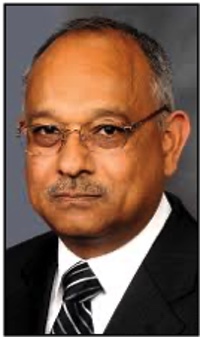 Figure 1. Alok Das would become one of the foundational minds of the AFRL space enterprise. |
Space structures scientist Dr. Alok Das was dividing his time between the Phillips Lab space enterprise on Kirtland and the Lab’s Propulsion Directorate on Edwards Air Force Base in California as the EELV program began to develop. “The key, from my point of view at that point of time and space, was the environment,” remembers Das. Born in Uttar Pradesh, India, Das had become an American citizen only a few years before out of a deep desire to assist in President Ronald Reagan’s “Star Wars” programs for space defense.
| Das had the genius to see the potential of several of his young students, who would go on to great things at the Lab. |
Moved as a teenager in India by President Kennedy’s launching of the American space program efforts to reach the moon, Das earned his undergraduate degree in electronics and communications engineering at the Indian Institute of Science in Bangalore in three years and, two years later, his master’s degree in aeronautical engineering. Das caught the interest of the Indian Space Research Organisation, where he became an engineer designing attitude control systems for India’s first earth observation satellites. But he wanted to learn more, and he wanted to do it in the land that had started his interest in space, so he applied to and was accepted into Virginia Tech, where he earned his PhD in aerospace engineering in an astounding two years in 1982. Das arrived at the Phillips Lab facilities on Edwards as a Virginia Tech research associate before transitioning into the civil service two years later.[2]
Newly arrived full time in Albuquerque, New Mexico, in 1993 with a young family and promising career, Das said the organizational environment at the time was ripe for new discoveries. Helping him at this early stage were a group of young interns from the Palace Knight internship program, a special Air Force hiring program that was in place for standout doctoral students. Das had the genius to see the potential of several of his young students, who would go on to great things at the Lab. Just a sampling: a young University of Michigan grad student named Richard Scott Erwin (current AFRL Space Vehicles Chief Scientist), Texas A&M grad Benjamin Kyle Henderson (former Space Vehicles Acting Deputy Director and Chief of the Integration and Operations Division, now manager at the National Nuclear Security Administration), Ohio State’s Troy Meink (former NRO Principal Deputy Director and Secretary of the Air Force nominee), and Stanford University’s Steven Huybrechts (former Principal Director for the Command, Control, Communications, Space and Spectrum of the Office of the Assistant Secretary of Defense for Networks and Information Integration and DoD Chief Information Officer), to name only a few.
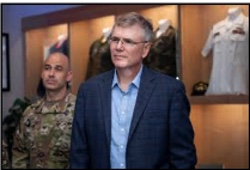 Figure 2. SECAF nominee Dr. Troy Meink started his career with AFRL in the 1990s helping to develop the ESPA ring. |
“The first step was the combining of talent for innovation,” Das remembered. It was “a flexible environment with an organizational framework that allowed small teams to come together to work… innovators who can be brought in to work in sort of an ad hoc manner to facilitate intense collaboration.” Das and his colleagues at the Phillips Lab had set their sights on developing small satellites, or smallsats, called microsatellites at the time. This was at a time when massive, expensive satellites like the 4,500-kilogram, $800 million MILSTAR 2 had just launched aboard a $433 million Titan IV launch vehicle. It was the early ’90s, and the space defense industry was still emerging from a Cold War world where the specter of nuclear war meant no-fail mission assurance and system redundancy manifested in operational sats growing in size, complexity, and capability. Smallsats, simply put, were considered the realm of the amateur space enthusiast. Das: “We did work on the idea of taking advanced technologies and shrinking them down [into smallsats]. They were considered toys. We would brief someone, and they would say, ‘Hey, do you know what you’re talking about?’”[3]
Under OSD guidance, General Thomas S. Moorman, vice commander of AFSPC, and a group of 30 individuals representing the defense, intelligence community (IC), civil, and commercial launch sectors had examined the entire US launch enterprise and conducted a Space Launch Modernization Study through the first half of 1994. The executive summary, known as the Moorman Report, was issued in May and recommended new launch capabilities, measures to lower production costs for current systems, and offered a road map of options for rapid space access for the 21st century. President Clinton concurred with Moorman’s committee findings and signed a new National Space Transportation Policy (PDD/NSTC-4) on August 5, 1994, giving the Defense Department responsibility for “improvement and evolution of the current U.S. expendable launch vehicle (ELV) fleet” that would evolve from and replace the Atlas, Titan, and Delta legacy systems.
As the DoD executive agent for space, the new “EELV” program was the Air Force’s tasking to make happen. On the civilian side of the house, the Clinton Space Transportation Policy also pushed NASA to develop “next generation reusable space transportation systems”: a Reusable Launch Vehicle (RLV) that would eventually replace the shuttle. Reliability in space launch was needed, but the undergirding objective was to bring the hundreds of millions of dollars required for each launch for a single payload under control.[4]
Back in New Mexico at the Air Force Phillips Lab, the Space Structures and Controls Division needed a new shop. As the DoD lead for the development of space structures and controls technology for each of the services, the Phillips Lab on Kirtland was notable for its full spectrum program, running the gamut from basic research to on-orbit space experiments to final proof of concept demonstrations for technology transition to warfighter system applications. In the early 1990s the group worked out of eight buildings across 1,100 kilometers between Edwards Air Force Base and Kirtland.
| The key with the new lab was to mimic the environment of space and conditions of space launch as much as possible to remove any possibility for failure. |
At Kirtland, the group conducted experiments in a small hangar at the end of the Kirtland flightline—a site of extreme vibration from aircraft landing on the east-west runway—on programs like the Space Active Vibration Isolation (SAVI) and Space Integrated Controls Experiment (SPICE) programs. To remedy this environmental challenge, construction began on the Phillips Lab campus proper, further northwest of the vibration of the flightline, on a new Space Structures Laboratory that would serve as a central R&D center for the consolidated 60 space vehicle scientists and engineers not only from Kirtland, but also Alok Das and his team arriving from Edwards. Rather than waiting for the building to be finished before moving in, the team of engineers, contractors, and space structures researchers cooperated to begin installing highly specialized equipment during the building’s construction to get an early start on their work before it was officially opened in August of 1995.
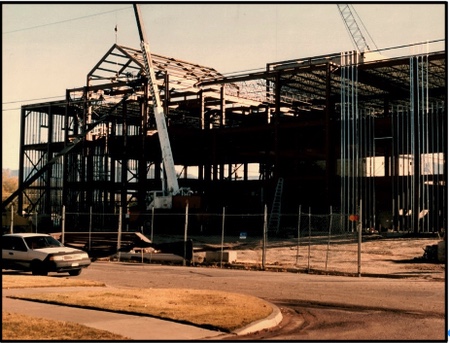 Figure 3. In 1995 the Space Structures Lab at the Phillip Lab and Air Force Research Lab would become the home to innovation in space R&D to this day. |
The key with the new lab was to mimic the environment of space and conditions of space launch as much as possible to remove any possibility for failure. The lab featured a new four-story high bay fitted with architectural qualities to limit motion and muffle noise. Key walls would deaden sound and dampen vibration to create a realistic atmosphere to evaluate complex space structures. Vibration specialists would use the 5,570-square-meter bay space to perform tests that would eliminate “jitter,” or shakiness, in large experimental space structures. One of their first missions was to seek an ultra-quiet and virtually jitter-less platform for greater accuracy and stability in mission performance. A 60-centimeter-thick, 4.2x4.2-meter, 35-ton granite slab inside the facility would allow scientists to perform special two-dimensional directional experiments on an extremely flat surface (0.04 millimeter variation) to mimic a test object sliding through the relative “smoothness” of space without vibration. The entire building rested upon 128 one-meter-diameter, reinforced concrete pillars that extended 14.3 meters into the earth rather than using a traditional concrete footing to further isolate external vibration from vehicle and air traffic from the nearby Kirtland flightline and Albuquerque airport from the experiments inside.
In addition to the high-bay testing enabled by the new space structures laboratory, the facility also allowed for R&D in composites and advanced concepts for manufacturing approaches. Hardware to test the tensile strength of structural components was another key feature of the lab’s custom design. Unique facilities within the new laboratory would also measure the effects of space on experimental structures.[5]
When the Phillips Space Structures Lab opened in the late summer of 1995, it was nearly 50 years to the day since the establishment of the Lab’s first organizational predecessor, the Cambridge Field Station. Five decades on, Phillips Lab was still at the pinnacle of space-related R&D for the DoD and in the early process of restructuring and consolidating from four independent “Super Labs”—Phillips, Rome, Armstrong, and Wright Labs—into one unified Air Force Research Laboratory with nine technology directorates and the Office of Scientific Research.[6]
In developing its top space programs, Phillips Lab and other federal laboratories had taken on an increasingly important role not only developing technologies for the nation’s defense, but also leading and supporting the nation’s research and development efforts for industry and academia more broadly as well. These expectations for government labs were put into public law via the Stevenson-Wydler Technology Innovation Act of 1980 and the Federal Technology Transfer Act of 1986. To this end, Phillips Lab and, beginning in 1997, the consolidated Air Force Research Laboratory, paid special attention to three ways of taking new and important technologies out of Air Force labs and moving them to other government agencies, the warfighter, and the private sector and civilian public. These three were:
Technology transfer, the sharing Air Force technology with the private sector, and dual-use technology development, or seeking technologies with important military uses as well as meaningful commercial uses, were deemed vital to the nation’s defense in the waning years of the 20th century. One of the means of achieving technology transfer that was and continues to be extraordinarily impactful for AFRL and the modern US Space Force includes the Small Business Innovation Research (SBIR) program.
In 1982, Congress passed the Small Business Innovation Development Act which created the SBIR program. Congress intended the SBIR program to promote technology innovation from small businesses while giving the federal government “cost-effective technical and scientific solutions to challenging problems.” The arrangement also looked to encourage small businesses to market the technologies developed under SBIR contracts in the private sector. Therefore, SBIR contracts would help the government infuse new ideas in a cost-effective manner while transferring new and innovative technologies to industry and business. The SBIR program had four major objectives:
As designed, SBIR consisted of three phases. Phase I studied technology feasibility. During this phase, contracts could be awarded for up to $100,000 and lasted nine months. During Phase II, research and development needed “to produce a well-defined product/process” and was awarded for up to two years and for not more than $750,000. However, in Phase III, which looked to the commercialization of the product as its primary goal, SBIR funds would not be used. Either private sector or non-SBIR federal sources, therefore, funded Phase III.
Small businesses were ultimately responsible for the commercial marketing and sale of the technology or product developed under a SBIR. The government, though, did encourage commercialization efforts by making every reasonable effort to ensure that any government follow-up actions growing out of a SBIR drew upon the SBIR contractor’s expertise. This included making sure that any near-term research, development, or production of technology developed under a SBIR was accomplished through contract with the same SBIR small business that originally worked on developing the technology.
Since its inception, the SBIR program had proven itself with helping AFRL develop technologies, which was especially true during the Phillips Lab era. By 1995, investment by Phillips Lab and its predecessor units in the SBIR program grew from an initial investment of less than $8 million per year to approximately $32 million.[8]
| From an OSD standpoint, it was difficult to stomach spending an average of $20 million to launch a small satellite that was considered little more than a toy on its own launch vehicle. But what if a small satellite—or possibly satellites—“hitched a ride” in this space below the primary spacecraft? |
Down the street from the Space Structures Lab on Kirtland Air Force Base, the DoD Space Test Program office at the Space and Missile Systems Center was hard at work engaged supporting the EELV System Program Office (SPO). A young Air Force captain named Steve Buckley in SMC’s small launch vehicle office was working with Phillips Lab to develop a whole spacecraft vibration isolation system that was transitioning to the OSP program. During the 1990s, billions of dollars had been lost due to satellite malfunctions, resulting in total or partial mission failure, which could be directly attributed to vibration loads experienced by payloads during launch. These failures—which included the tragic Intelsat-708 and Zenit-2 failures discussed in part 1—continued into the late 1990s. Captain Buckley at SMC and Alok Das’s structures lead at Phillips Lab, Eugene “Gene” Fosness, were working to correct this problem. Part of the issue was that the launch vehicles being utilized to launch highly sensitive and specialized military science and technology satellites were primarily surplus missiles designed to carry durable warheads.
 Figure 4. (L to R) AFRL’s Eugene “Gene” Fosness was foundational in getting the ESPA program started; Steve Buckley of STP and AFRL was integral to championing the program through to completion. |
The solution to this problem led to the development of the Orbital/Suborbital (OSP) Space Launch Vehicle. Also known as the OSP “Minotaur”—a name derived from the four-stage, ground-launched solid-propellant inertially guided Minuteman II ICBM space lift vehicle combined with the upper two stages, structure, and fairing of an air-launched Taurus or Pegasus space vehicle—OSP included a Phillips Lab shock vibration isolation technology system known as “SoftRide.”
Buckley and his group at SMC had attended the first EELV Payload Integration Working Group (PIWG) in 1995. Early on, Phillips Lab and SMC had identified a key space between the launch vehicle upper stage and the primary spacecraft that had upwards of 10,000 kilograms of excess capacity that could conceivably carry a secondary payload that was not being used. In theory, this space could provide an enormous opportunity to launch small satellites at the same time as the single primary satellite above it. From an OSD standpoint, it was difficult to stomach spending an average of $20 million to launch a small satellite that was considered little more than a toy on its own launch vehicle. But what if a small satellite—or possibly satellites—“hitched a ride” in this space below the primary spacecraft? Early studies on the potential savings that could be gained from merging need and opportunity showed an enormous magnitude of reduction in cost: launches that cost $10 to $20 million per spacecraft per launch could be reduced to less than $1–2 million.[9]
 Figure 5. Schematics of ESPA mounted to EELV upper stage at Standard Interface Plane with one primary payload and six small satellites; all payloads have whole-spacecraft launch isolation, from “ESPA: EELV Secondary Payload Adapter with whole-spacecraft isolation for primary and secondary payloads” Maly, Haskett, et al. |
Launch costs continued to hinder the full exploitation of small satellite technology, which impacted Phillips Lab’s ability to perform its space mission, that being executing space experiments, demonstrating new technology, and testing prototype hardware and software to deliver to the warfighter. The OSP Minotaur helped with this, as it allowed for a dual-payload adapter, which would bring the cost to launch a pair of small satellites down to $7 million per spacecraft from $20 million on Taurus and Athena I and Athena II launch vehicles. Moreover, the French Arianespace aerospace company offered inexpensive secondary payload flights on Ariane 4 and Ariane 5 boosters using an adapter called an Ariane Structure for Auxiliary Payloads (ASAP) ring.
The ASAP ring was first utilized on the SPOT 2 mission launched aboard an Ariane 40 rocket from the Kourou launch site in French Guiana in January 1990 carrying the Doppler Orbitography and Radiopositioning Integrated by Satellite (DORIS) system, a French Earth observation program. The ASAP utilized a flat plate adapter design contained within the topmost portion of the launch vehicle attached to the primary payload and could vertically jettison up to six SmallSat payloads weighing roughly 100 kilograms or 220 pounds each. The ASAP platform utilized a series of stacked plates, springs, bolts, and other mechanical moving pieces to launch a limited number of vehicles within the main upper payload deck.[10]
 Figure 6. ASAP ring configuration for SPOT 2 mission. |
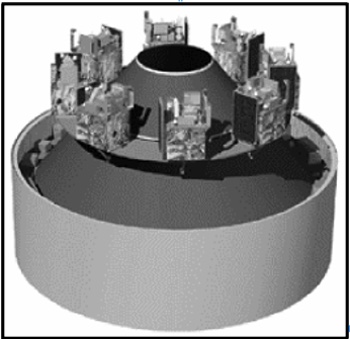 Figure 7. ASAP ring configuration. |
 Figure 8. Multi-satellite platform for Ariane 4. |
On their off hours, Buckley and Fosness would enjoy exploring the wildlands of New Mexico together and bonded over their shared problem. STP had payloads on the Space Experiments Review Board (SERB) list that were unable to fly due to cost. Phillips Lab had multiple smallsat programs that struggled to get a SERB slot into space as well. EELV launchers had large unused space between the launch vehicle upper stage and the primary spacecraft. The ASAP adapter was not an option for several reasons. European Space Agency (ESA) and US government and commercial satellites were designed with differing interface standards and payload requirements. Moreover, American satellites, especially those used for military or intelligence purposes, were subject to ITAR (International Traffic in Arms Regulations) restrictions and other security protocols. Using a non-US payload adapter would raise concerns about export control, security, and intellectual property protection.
Buckley and Fosness and their teams considered this and came up with a solution: What if Phillips Lab developed their own type of ASAP ring that could be used on American launch vehicles to send multiple STP smallsats to space?[11]
This secondary payload vision was pitched by SMC at the next EELV PIWG in 1996. Joining Captain Buckley at the PIWG were two young Aerospace Corporation engineers supporting the small launch vehicle office of SMC—Catherine “Kitty” Sedam, who had most recently worked on the deployable pallet for the Space Shuttle, and Les Doggrell, who had cut his teeth as an Air Force lieutenant on the electronic warfare range at Nellis Air Force Base with Tactical Air Command who had also attended the first PIWG in November 1995.
 Figure 9. Aerospace’s Les Doggrell was one of the early minds on the ESPA. |
Sedam recalls the attitude they were met with in the launch community: “One of the big challenges [we overcame] was this attitude of why would they take on this additional risk and cost and that is in part because smallsats were considered toys in comparison to the ‘real spacecraft.’ Cubesats didn’t exist yet, and the utility of small satellites was still questioned. They may be OK for small R&D projects, but the big hitters weren’t going to use them. [The attitude was] ‘why add this additional piece of hardware that’s going to cost money and work and risk, and who really cares about launching small satellites anyway?’” Indeed, the culture of “better, faster, cheaper” that prevailed in the spaceflight industry at the time caused a “loss of success” and deep aversion to even the most minimal of launch risks.[12]
 Figure 10. Aerospace Corp’s Catherine “Kitty” Sedam. |
At the ’96 PIWG, Captain Dave Tobin of the STP office presented a vision of EELV secondary payloads that would enable STP to achieve objectives for launching small satellites and the roadblocks to that effort. More capacity per launch was desperately needed. SERB missions were not flying. Les Doggrell tells a tale of resistance from EELV at the PIWG: “At the Payload Integration Working Group we asked the question of what about accommodations for small satellites in this unused space between the upper stage and the primary spacecraft, and we were told ‘no, we’re not gonna do that.’” The Air Force EELV program itself was less than two years out from its creation under President Clinton’s National Space Transportation Policy and still busy trying to standardize basic primary payload integration with the launch vehicle, and “the last thing they needed was more worries about small satellites,” Doggrell remembers.[13]
| Haag also used a saying that would become a “secondary payload commandment” for the later adapter ring development effort: Thou shalt not provide risk to the primary spacecraft. |
Gene Fosness at Phillips Lab corroborates the chilly reception to the idea of a multi-spacecraft adapter sitting beneath the primary payload. “The guys here got a lot of pushback [from EELV]. We were messing with their launch vehicle.” While developing the idea of a secondary payload adapter, the Phillips Lab Space Structures group had been working with Conor Johnson and his team from CSA Engineering on Phase II SBIRs for the whole-spacecraft passive launch isolation SoftRide program and a series of smart magnetic tuned mass dampers (TMDs), resonant devices designed to suppress or absorb vibration during space launch. Johnson’s track record of success in space launch vibration suppression technology with Phillips Lab had extended to the Lab’s directed energy programs as well. CSA’s vibration suppression system for the Airborne Laser Test Bed (ALTB) provided vibration mitigation control hardware for key ALTB beam control, optical bench isolation, and mirror control subsystems.[14]
Emily Calvanese was a young structures analyst fresh out of the University of California, Davis and her first job at MSC working with NASTRAN (a NASA structural analysis program) when she took the job doing similar work at CSA. “I worked with a lot of different AFRL programs. I designed the isolation system for the Minotaur launch vehicle. That’s how I got started. Those SBIRs were the life blood of our company. We developed a number of different adapters. We had CASPAR [Composite Adapter for Shared Payload Rides], which was this composite adapter for secondary payload rides—that was my favorite acronym because I came up with that one! We were also doing flat plate adapters that you could put multiples, we did that for the [NASA dual-spacecraft] GRAIL mission.”[15]
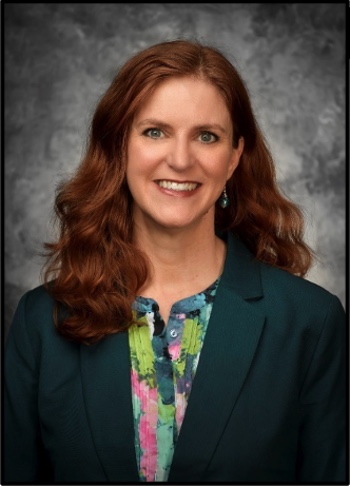 Figure 11. CSA/Moog’s Emily Calvanese. |
By the next integration working group in 1997, Captain Gary Haag of STP presented sketches of an ASAP-like adapter, but armed with a possible propulsive element within the adapter itself to act as a spacecraft bus that could potentially take smallsats to higher geostationary orbits. He also used a saying that would become a “secondary payload commandment” for the later adapter ring development effort: Thou shalt not provide risk to the primary spacecraft. Nonetheless, the EELV SPO response was middling, stating there was no sustainable market for secondary capability. Gene Fosness of the reformed Phillips Lab under AFRL describes the enormous frustration of the STP launch team and the Phillips science and technology program team: “I kept looking at and hearing about this unused space on the launchers and not being able to fly the programs.” The space community on the west side of Kirtland Air Force Base would not take no for an answer: STP lobbied Air Force Space Command to write a formal secondary payload requirement. AFSPC came back and said a formal SPO requirement would not be added, but that secondary payload adapters were indeed implied within the existing requirement.[16]
The Air Force had seen the writing on the wall for cost saving potential and agreed to allow the investigation of secondary payload options. The Dual Payload Attach Fitting (DPAF) ring that was already being tested for Pegasus and Taurus missions was a first step. But what about multi-payload adapters? By the end of 1997, the work of the Phillips Lab Space Structures and Controls Division had merged into the Air Force Research Laboratory, and the former Chief of the Space Operations and Simulation Division and Director of the Phillips Lab Space Technology Directorate was now the first Director of the AFRL Space Vehicles Directorate, Christine Anderson. Gene Fosness recalls, “Christine Anderson was going through her portfolio with NASA, and they had a lot of payloads to fly too.” The Space Structures Lab was complete and also served as the new headquarters for the Space Vehicles Directorate. The Lab was primed for a new task to test their facility. “She [Anderson] was bold with the support.” Gene had been working on crafting a call for proposals for a Phase I SBIR in support of a multi-payload adapter since the beginning of the year. “When I wrote the SBIR topic, it was kind of cool. You had a small little program here that took off to be a major space asset and we got it going here.” With the greenlight from Anderson, the call for proposals was issued to industry.[17]
“Isolation for Spacecraft with Multiple Payloads
Category: Develop advanced stabilization/isolation system for spacecraft that use multiple payload configurations for small launch vehicles.
DESCRIPTION: Multiple payloads are often launched on a single launch vehicle. Depending on the launch vehicle, the payloads can be stacked vertically or horizontally. In either case, there is a great deal of coupling “interaction” between the payloads, adapter, launch vehicle, and the launch environment. For small class launch vehicles, the environment is extremely harsh with dynamic accelerations at the payload adapter as high as 10-20 g’s. Current spacecraft are attached to the launch vehicle through a payload adapter. The adapter is hard mounted to the spacecraft and launch vehicle and provide no isolation to the spacecraft. As a result, the spacecraft must be designed and tested to very high vibration levels, which increases the life-cycle costs of many spacecraft components. The design of a spacecraft requires knowledge of structural and acoustics loads induced by the dynamic interaction with the launch vehicle. These loads are primary inertial, highly transitory, and are functions of the spacecraft, launch vehicle, and external forces. Consequently, the design process is highly interactive. For the spacecraft/adapter/launch vehicle interface, the government desires a factor of 3 reduction in the dynamic structure-borne vibration in the frequency band from 40 to 500 Hz. Also, a factor of two reduction in the dynamic interaction between the payloads is desired. The system must satisfy all requirements imposed on current payload adapters, be compatible with launch vehicle control systems, and have minimum or no impact on payload volume and weight allowances beyond those of current payloads adapters….
PHASE I: This effort will formalize and provide supporting analysis for an innovative isolation/stabilization system for launch vehicles with multiple payloads that are vertically stacked. Proposers need to thoroughly define the problem, this includes specifications of the launch environment to be attenuated, any potential restrictions or limitations faced in the implementation of the isolation systems with the satellites manufacturers. State system level performance goals. Develop system level and component level conceptual design. Analytical and simulation results will be presented to demonstrate performance of the system.”[18]
Note: we are now moderating comments. There will be a delay in posting comments and no guarantee that all submitted comments will be posted.